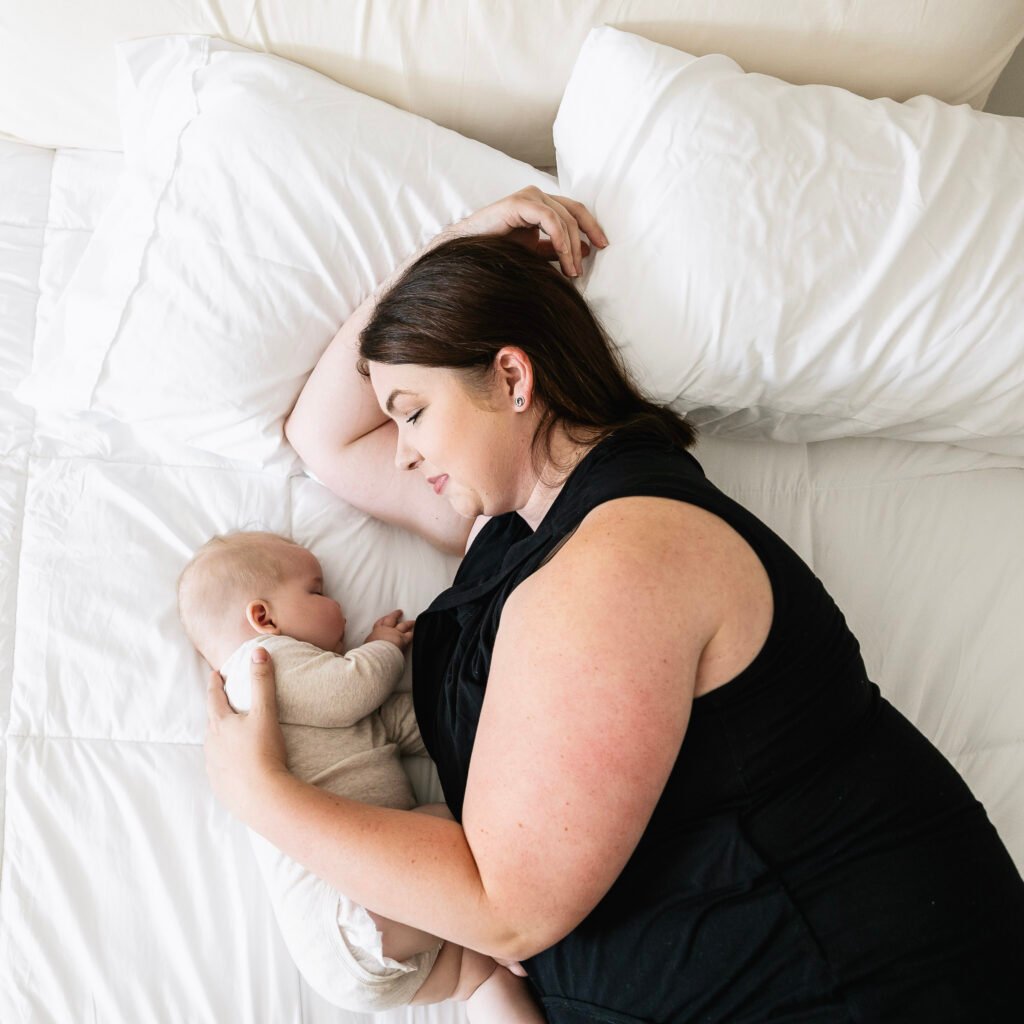Around 6 weeks postpartum, I expected to feel more like myself. I had avoided exploring anything in the vaginal area for fear of what I would find, but I had felt a general heaviness since I had given birth. Not knowing if this was normal, I made an appointment with my doctor to get checked out.
Upon examination, my doctor confirmed that I had a prolapsed bladder. His tone was nonchalant, as if it was normal and something that just happened sometimes.
I was completely shocked. What had gone wrong? And why did I never hear that this was a possibility? I immediately started blaming myself. Why had I not done more kegels during my pregnancy? Why didn’t I do more research to know that something like this could happen? Did the decision to use a vacuum during the last bit of pushing influence this? What could I have done to prevent this?
But the truth is, some women are just more susceptible to prolapse after pregnancy. While a prolapse can occur for many reasons, some women have more of a genetic risk for the condition due to the strength of the connective tissues. It’s not your fault.
That being said, some things may help you either avoid a prolapse or improve your symptoms if you have one.

Understanding Prolapse After Pregnancy
It’s important to remember that prolapse after pregnancy is common and not something to be ashamed of. Pelvic organ prolapse occurs when the muscles and tissues supporting the pelvic organs weaken, causing one or more of these organs (such as the bladder, uterus, or rectum) to drop or press into the vagina. This can lead to feelings of pressure, heaviness, or even a bulge in the vagina.
Types of Prolapse After Pregnancy:
- Bladder prolapse after pregnancy (cystocele): This occurs when the bladder drops and pushes against the front wall of the vagina.
- Rectal prolapse after pregnancy (rectocele): This happens when the rectum bulges into the back wall of the vagina.
- Small intestine prolapse after pregnancy (enterocele): This can occur when the small intestine pushes down on the weakened area between the vagina and rectum.
- Uterine prolapse after pregnancy: This is when the uterus descends into the vagina.
- Vaginal vault prolapse: This occurs when the top of the vagina loses support and drops downward, often after a hysterectomy.
How to Improve Symptoms of Pelvic Organ Prolapse
- Maintain normal weight: If you are overweight, you are more susceptible to a prolapse due to increased pressure inside the abdomen.
- Avoid constipation: Constipation can cause strain during bowel movements, increasing the chance of a prolapse. Eat a high-fiber diet and drink plenty of water daily.
- Keep active: A regular exercise plan keeps your weight in check and helps promote healthy bowels. Be sure to also include your pelvic muscles in your daily workout routine.
- Avoid extra pressure inside the abdomen: Things like lifting heavy objects and chronic coughing create persistent pressure, which can increase the likelihood of developing a prolapse or making your symptoms worse if you have one. Stay healthy and avoid strenuous lifting.
How to Improve Symptoms of Pelvic Organ Prolapse
- Maintain normal weight: If you are overweight, you are more susceptible to a prolapse due to increased pressure inside the abdomen.
- Avoid constipation: Constipation can cause strain during bowel movements, increasing the chance of a prolapse. Eat a high-fiber diet and drink plenty of water daily.
- Keep active: A regular exercise plan keeps your weight in check and helps promote healthy bowels. Be sure to also include your pelvic muscles in your daily workout routine.
- Avoid extra pressure inside the abdomen: Things like lifting heavy objects and chronic coughing create persistent pressure, which can increase the likelihood of developing a prolapse or making your symptoms worse if you have one. Stay healthy and avoid strenuous lifting.

Postpartum Incontinence and Prolapse
Postpartum incontinence is another common issue after childbirth. It’s often related to pelvic organ prolapse, as weakened pelvic floor muscles can lead to both conditions. Urinary incontinence postpartum can manifest in different ways:
- Stress incontinence: Leaking urine when you cough, sneeze, laugh, or exercise.
- Urge incontinence: A sudden, intense urge to urinate followed by an involuntary loss of urine.
How Long Does Postpartum Incontinence Last?
The good news is that for many women, bladder incontinence postpartum improves within the first few weeks or months after delivery. As your body heals and your hormones regulate, you’ll likely regain better bladder control.
However, it’s important to remember that every woman’s recovery is different. For some, postpartum incontinence can last longer. Factors that might influence the duration of incontinence include:
- Severity of pelvic floor muscle weakness
- Type of delivery (vaginal or cesarean)
- Presence of other pelvic floor disorders
- Individual healing process
If you’re concerned about the length of time you’re experiencing incontinence postpartum, it’s essential to talk to your doctor. They can assess your sp
Pelvic Floor Exercises for Postpartum Incontinence
Pelvic floor exercises, such as Kegels, can help strengthen the muscles that support your pelvic organs. Here’s how to do Kegels correctly:
- Identify the right muscles: Imagine you are trying to stop the flow of urine midstream. Your pelvic floor muscles are responsible for this.
- Squeeze and hold: Tighten these muscles and hold for 3-5 seconds.
- Relax: Release the muscles completely for 3-5 seconds.
- Repeat: Aim for 10-15 repetitions, 3-4 times a day.
Managing Postpartum Urinary Incontinence
In addition to Kegel exercises, here are some tips to manage urinary incontinence postpartum:
- Bladder training: Go to the bathroom at scheduled times, gradually increasing the intervals between bathroom breaks.
- Lifestyle changes: Limit caffeine and alcohol, which can irritate the bladder.
Get Free Postpartum Incontinence Supplies Through Aeroflow Urology
Dealing with postpartum incontinence can be challenging, but you don’t have to go through it alone. Aeroflow Urology is here to support people experiencing postpartum incontinence. We offer many resources and can help you get free incontinence supplies through your insurance plan. Our discreet and convenient service delivers high-quality incontinence products right to your door.
Visit the Aeroflow Urology Postpartum Incontinence Campaign hub for help navigating your postpartum journey.
Fill out Aeroflow Urology’s quick and easy form to check your eligibility and see if you qualify for free incontinence supplies.
Don’t let prolapse after pregnancy hold you back. Talk to your doctor about your options, and find a qualified physical therapist to help you learn how to strengthen your muscles to improve symptoms.







